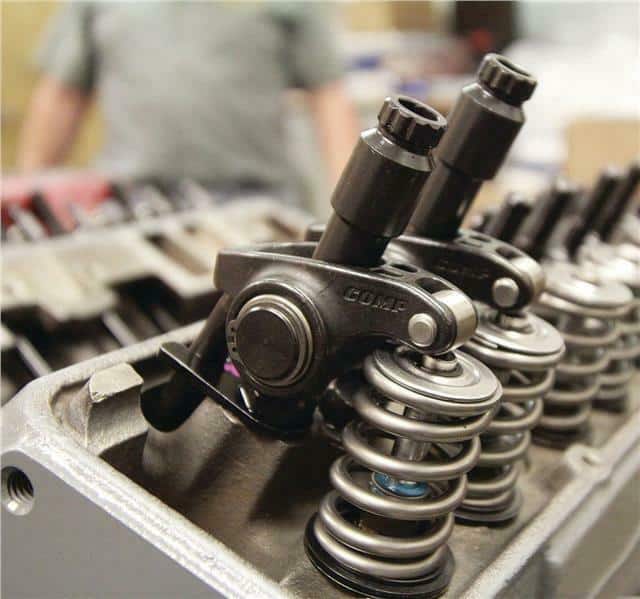The tiny cylinders located next to each cylinder valve in the car are known as lifters. Also known as hydraulic tappets, these lifters guarantee that the car functions smoothly and quietly.
Different engines need different lifters:
- OHV Engines: In the case of OHV engines, solid and hydraulic lifters can both work. However, some people consider hydraulics such as LS7 lifters better since they do not require routine adjustment as they can adjust themselves internally with the help of pressurized engine oil.
Furthermore, there are two additional types of lifters: roller and flat. Flat lifters can be found in antique cars and have a flat face that can be slid on the camshaft, while roller lifters consist of a wheel-like roller that follows the shape of the camshaft.
- OHC Engines: Lifters are also used in overhead camshaft engines as hydraulic lash adjusters that are placed between the cylinder head and the camshaft follower. They are integrated into the rock arm or placed inside the bucket over the valve, depending on the layout of the engine.
- Modern lifters: The modern lifter technology used in engines nowadays can turn off half the engine’s cylinder in order to save gasoline.
How do lifters work?
The exhaust and intake valves are operated via lifters. As the cam rotates, the lifters are pushed up and down which moves these valves in open and closed position. On the other hand, in non-overhead cam engines, the reciprocating movement of the rocker pushes the rocker up and down with the push rod by the lifters.
Solid lifters do not compress as much as hydraulic lifters do. They are mostly used in racing applications. In case of solid lifters, lifters should be adjusted regularly in order to keep the required tolerances.
Hydraulic lifters do not require any adjustments. They have more individual parts in comparison to solid lifters and come with an oil “pump up” before they are adjusted in the car.
Rolling lifters are hydraulic lifters equipped with rollers. These rollers ride on the camshaft on engines with or without overhead cams. This increases horsepower by creating less resistance.
Symptoms of a bad lifter
Like every other component of the car, your engine lifters will also show some signs that will notify you something is wrong. Here are a few of them to look out for:
- Loud noise: One of the most common symptoms of a lousy lifter is excessive noise from the engine. This is because the broken lifters hammer against each other and create loud and annoying noises. The intensity of the noise increases as the driver accelerates the car, and the lifters try to actuate faster.
- Dead cylinders: A bad lifter can break or pend pushrods (the cylindrical metal tube that transfers the motion of lifters from cams to the valves. The bent pushrod, in turn, impacts the corresponding cylinder and reduces the engine’s performance. It is essential to address the dead cylinder immediately as it can harm related components and lead to engine breakdown.
- Engine light: If the check engine light of your car is on, there is a possibility that there is some malfunction on your car sensor or electrical component. When the lifter is broken, it can cause several warning lights on the dashboard, which should be fixed as soon as possible.
- Misfire: If the lifters malfunction, the valves do not open as they should and disrupt the combustion process. This can cause misfires in the engine.


